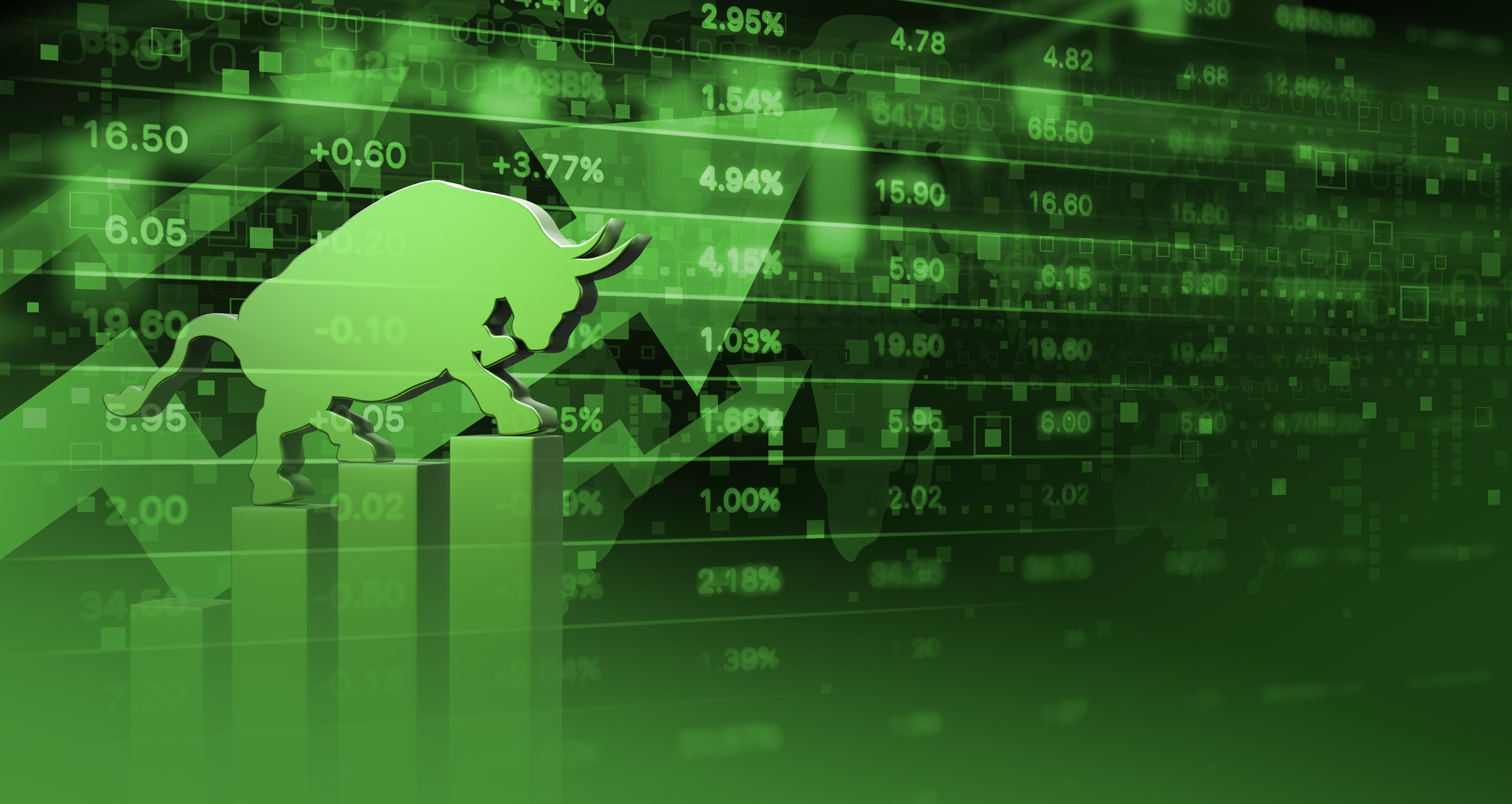5 Consumer Trends to Keep an Eye on for the Long Term
Here are five key things and categories to keep in mind as you're thinking about investing and considering the economic landscape in the coming months and years.

It's an interesting time to be an investor. Artificial intelligence is making its mark on the world in continuously more profound ways. The Federal Reserve has increased interest rates from virtually zero to over 5% with a goal of tamping down inflation. As growth in the U.S. looked like it was slowing over the last few months, experts have been debating whether we would be able to achieve a "soft landing" or whether we could potentially see a recession.
Even though it has seemed like a roller-coaster ride through the COVID pandemic and beyond, there are reasons for optimism. Take, for example, consumer debt. Many consumers, bolstered by stimulus checks and reduced spending during the pandemic, paid down debt, bolstered their cash reserves and, generally, got more financially stable. While debt levels have ticked up more recently, the nature of that debt is less impacted by moves in interest rates. Just prior to the mortgage-induced financial crisis of 2008, many borrowers were seduced by the allure of adjustable rate mortgages (ARMs), especially in the subprime portion of the market. Today the proportion of home mortgages that are ARM is a fraction what it was in 2007. Since consumer spending accounts for 65% to 70% of GDP growth, it's important to consider what impact all of those things will have on how consumers spend their money.
Ultimately, as the consumer goes in the United States, so goes GDP growth, which has a tremendous impact on the global economy. To that end, here are five key things and categories to keep in mind as you're thinking about investing and considering the economic landscape in the coming months and years.
1. Omnichannel Retailing: Reshaping Consumer Behavior
In the pre-pandemic years, some retailers operated on the assumption that they could conduct business exclusively online. E-commerce businesses such as Amazon were in a steady state of growth. However, when it comes to shopping categories such as grocery and apparel, it's clear that consumers want to have the option for a hybrid shopping experience. Amazon knew this, and in 2017 the retailer acquired Whole Foods Market for $13.7 billion. It was an admission that online shopping wasn't going to be able to take over the entire world: There is still a need for brick and mortar. People like to be able to shop online with fast shipping, but they also like to be able to shop in person and choose their own produce, meats and other perishable goods. The Amazon and Whole Foods model is a shining example of successful omnichannel retail.
Similarly, Nike has been able to demonstrate this phenomenon. It has been shifting from a wholesale model, where its products were sold in partner retailers such as Foot Locker and department stores, to a direct-to-consumer model. This gives consumers a variety of opportunities to interact with the brand.
From an investment perspective, it's wise to keep an eye on how omnichannel retailing is revolutionizing consumer behavior and fundamentally changing the retail landscape. Companies that are successfully integrating physical stores with digital platforms are likely to have an edge over those with less diverse distribution, demonstrating resilience and growth potential.
2. The Shift Back to the Office: It Impacts More Than the Workplace
Now that the pandemic is officially over, 100% remote work is becoming more the exception than the rule.

As such, the resurgence of office work presents investment prospects in various sectors. Commercial real estate, transportation, quick-service restaurants and travel are all likely to see a resurgence because consumers will be spending more disposable income on commuting and services related to being in-office. Office workers will likely need a wardrobe refresh after years of comfortable, ultra-casual, work-from-home attire, presenting a possible surge in profits for apparel retailers and personal care products. Employees will also be spending more time on the road, commuting between their homes and offices, so fuel prices are likely to remain high. And they'll be interacting with other businesses along the way, such as restaurants with drive-thru offerings and gas stations.
3. AI and Shopping: Enhanced Response and Prediction
The role of artificial intelligence in shopping is an area of near-unlimited opportunity, but it is still evolving. We are in the early stages. AI-powered bots can act as "assistants" to do tasks such as making a shopping list based on the meal you're planning to cook, a stylist to virtually try on clothing or an erstwhile travel agent to plan a vacation. While these services are still in their infancy, they are primed to leave their mark on how consumers shop.
Anyone who has purchased something online knows that user reviews can be valuable when making a decision about a product you can't see in person. However, as AI chatbots are deployed to "stack" reviews to sell products, it can be difficult to tell the truth from marketing-speak. One significant AI opportunity for online retailers that want their reviews to be truthful as a service to shoppers will be to use sophisticated programs to "scrub" untruthful reviews from their sites. They can also use AI to help further refine their searches to serve up products customers want, based on their past shopping history and search criteria. Online retailers that differentiate themselves with a seamless shopping experience and the quality of the information they provide about the products they're selling are primed to succeed.
4. Experiences Are Expensive, But Many Consumers Are Still Spending
When travel and in-person gatherings were rare, many consumers spent money on durable goods such as home appliances, vehicles and home improvements. Now that those things are bought and paid for—and don't yet need to be replaced—consumers have turned their attention to experiences, chief among them being travel.
Another contributing factor: During the pandemic, the upper half of the U.S. population mostly kept their jobs and saw salary increases that increased their spending power. Plus, if those people had a home mortgage at 2.75% and saw a 5% or 6% salary increase, their housing costs have diminished over time. Now, they have more disposable income than ever and an intense interest to get out and see the world.

It's intuitive that there's a finite amount of inventory when it comes to travel—there are only so many resort rooms, seats on an airplane and rental cars in any given destination. The hotel group Hilton recently announced that RevPAR—that's the revenue per available room—is up 12% year on year. Hotels are seeing a strong return already, and bookings are going to continue to increase. Beyond traditional hotels, less traditional models—such as Airbnb and villa rentals—are continuing their climb in popularity as hotels are overbooked. Similarly, there are new ways of renting a car. Beyond the typical rental companies such as Alamo and Hertz, startups like Turo and Sixt are making an impact on the marketplace, potentially offering new opportunities for investors. To combat increased demand and unavailability, expect to see more and more alternative travel service providers entering the market.
5. Mobile Payment Adoption: How to Use It and How to Protect Yourself
More of a long-term trend, as mobile payment adoption grows, companies are increasingly providing secure payment platforms and digital identity verification solutions while the world continues to move away from fungible paper currency. Cryptocurrency was an offshoot of this—combining the convenience factor and a means with which to be able to track your transactions. The digital age means we're increasingly not exchanging goods face-to-face, and as a result, there is a level of trust that's been broken. Companies are stepping in to alleviate these concerns with services like Apple Pay. Now, we can simply tap our iPhone or Apple Watch and never need to pull out a credit card or cash.
Visa and MasterCard have done a phenomenal job of continuing to prove out the security measures. Most people have had some sort of fraud, even if it's minor, on their accounts, and most will attest that it's been resolved in their favor with minimal hassle. As such, consumer protections around this adoption of mobile technology payments will continue to chip away at the legacy credit card transaction and cash.
Understanding and capitalizing on emerging trends is imperative for building successful investment strategies. These consumer spending trends—and others—can help position us to maximize returns and navigate the evolving financial landscape with confidence in an ever-changing world.
This content was provided by Whittier Trust. Kiplinger is not affiliated with and does not endorse the company or products mentioned above.
This article was produced in collaboration with Teague Sanders, Senior Vice President and Senior Portfolio Manager, Whittier Trust
Profit and prosper with the best of Kiplinger's advice on investing, taxes, retirement, personal finance and much more. Delivered daily. Enter your email in the box and click Sign Me Up.
This content is part of a paid partnership
-
 The power and flexibility of 529 savings plans
The power and flexibility of 529 savings plansSPONSORED Today’s 529 plans can be used in more ways—and at more types of schools—making them one of the smartest ways to save for education.
-
 Stocks Grind Up to New All-Time Highs: Stock Market Today
Stocks Grind Up to New All-Time Highs: Stock Market TodayUnitedHealth stock led the Dow Jones Industrial Average amid increasing signs the labor market has not been well for months.